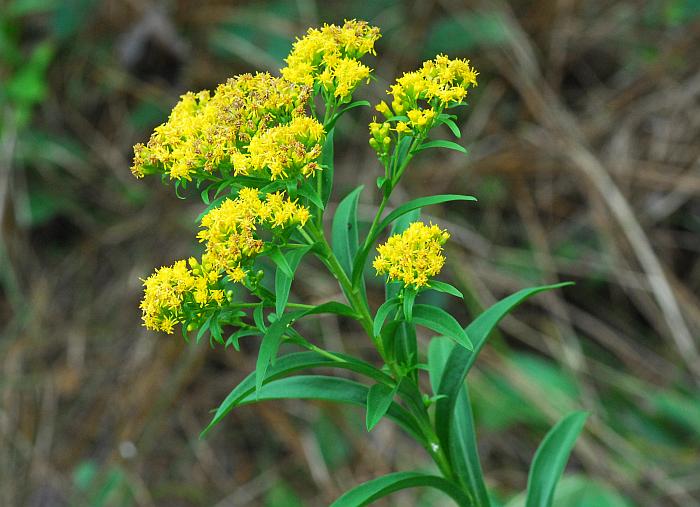Solidago riddellii Frank
Goldenrod

Native
CC = 10
CW = -5
MOC = 16
© SRTurner
Solidago riddellii FrankGoldenrod | |
 |
Native CC = 10 CW = -5 MOC = 16 |
© SRTurner |
|
Family - Asteraceae/Astereae Habit - Perennial herb on short, branched rootstock, sometimes with short rhizomes. Stem - Ascending to erect, to 1 m, finely longitudinally ridged, glabrous below the inflorescence, somewhat shiny.
Leaves - Alternate, basally disposed, with offshoots often present but with basal leaves often wilted at flowering. Blades to 25 cm long, more than 10 times longer than wide, linear, entire, folded along midvein, arching, glabrous. Leaves progressively reduced upward on stems.
Inflorescences - Terminal flat-topped panicles, with heads solitary or in small clusters at branch tips.
Heads - Involucres 4.5-6.0 mm long, the bracts in 3-5 unequal series. Involucral bracts linear, rounded at the appressed-ascending tip, the outer surface glabrous. Receptacle naked. Ray florets 7-9, the corollas 5-6 mm long, yellow. Disc florets 6-10, the corollas 4.5-5.5 mm long, the lobes 0.7-1.5 mm long, yellow. Pappus bristles 3.5-4.5 mm long.
Fruits - 1.5-2.2 mm long, narrowly obovoid, glabrous or with a few hairs along the ribs. Flowering - August - October. Habitat - Fens, calcaerous seeps. Origin - Native to the U.S. Lookalikes - Broadly, several other species of Solidago. Other info. - This uncommon species is found mostly in the Ozark Division, always in high quality fens or similar habitats. Its North American range is mostly to our north, in the upper Midwest and into Canada. With its arching, folded leaves and flat-topped inflorescence, it is easy to identify but not often encountered. It is attractive and deserving of wider cultivation. Photographs taken near Rocky Falls Shut-Ins, Shannon County, MO, 6-25-2016, and near Washington State Park, Washington County, MO, 9-24-2018 (SRTurner). |